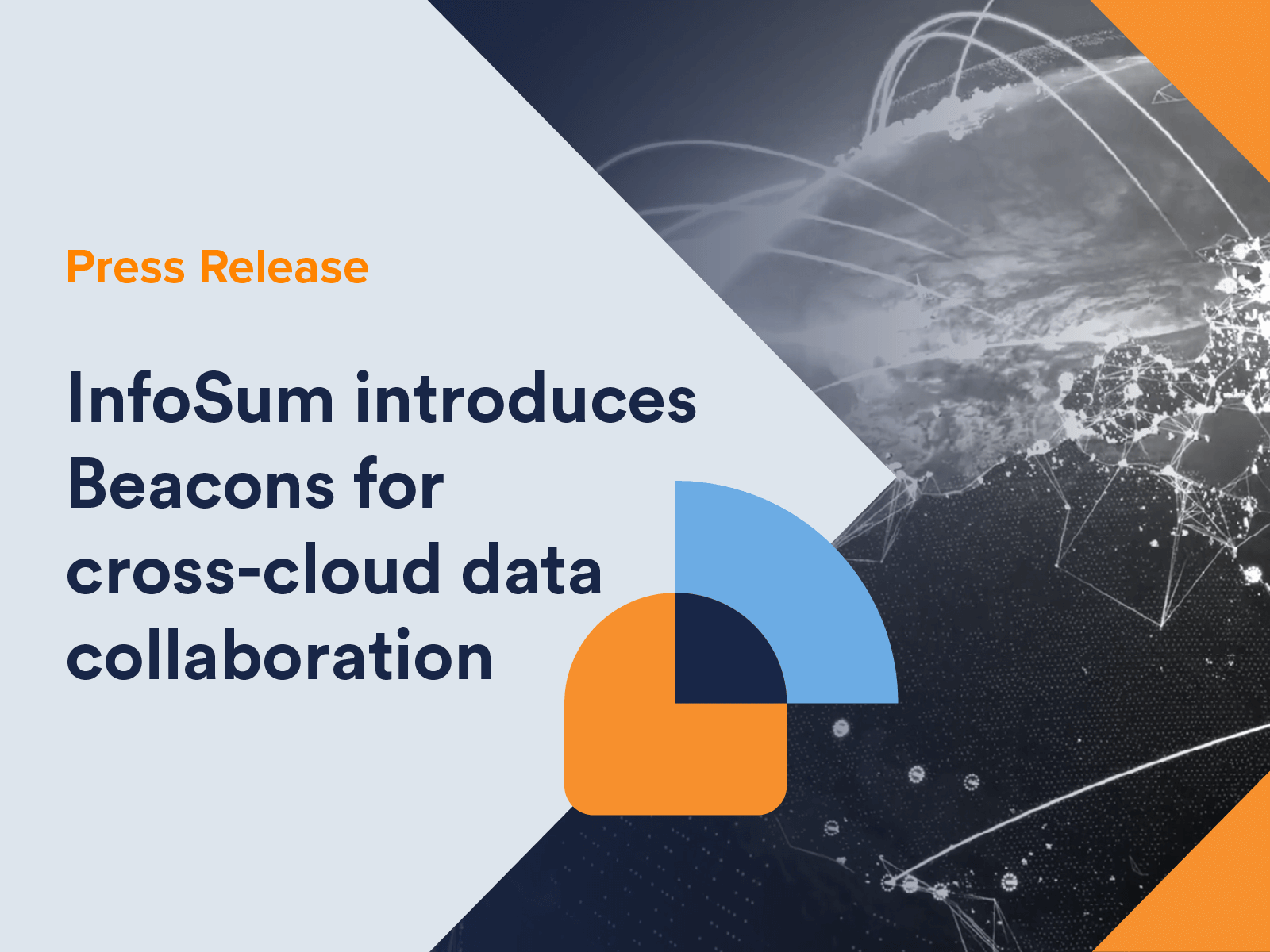As consumer behavior becomes increasingly fragmented across both digital and physical environments, customer-centric companies need to collect more and more sensitive data. This continual avalanche of IDs, attributes, and behaviors often requires heavy investment in advanced technology from multiple partners to unlock the full potential of that data.
As data becomes more accessible, the need for greater protection and security becomes paramount as consumer trust and privacy becomes a critical requirement for organizations. This runs counterintuitive to many of the practices and processes that currently underpin advertising technology which heavily relies on the sharing and commingling of sensitive customer data.
To combat the status quo, data clean rooms have emerged to solve these major challenges. A data clean room is a secure environment where multiple data sources are matched and analyzed, without sharing or compromising the data itself. The safety and security of data combined with the power and intelligence of multi-party computation have put the data clean room at the top of the must-have list for any organization that handles customer data.
Data clean rooms are not a new concept, with Google launching their data clean room, Ads Data Hub in 2017, followed quickly by both Facebook/Meta and Amazon. It is safe to say that any large enterprise organization that values its customers will start to put walls up around its proprietary assets. This heightened protection and paranoia could mean the end of data-driven marketing and advertising as we know it. Data clean rooms provide a sustainable way forward enabling secure data connections without sacrificing privacy or security. But, before you make an investment in the data clean room market, it’s important to understand not all data clean rooms are created equal and often don’t solve for the same needs. Many even fail to provide the most basic requirements such as enhanced privacy protection and complete non-movement of data.
What companies require from a data clean room
Any organization that touches customer data including brands, media owners, martech platforms, and data providers are looking to data clean rooms to solve six key challenges:
Complete protection and security over data
Consumers are more privacy-aware than ever. High-profile data leakage and misuse stories, combined with mainstream documentaries mean consumers have a heightened sensitivity to how their data is used, and where it is shared. Companies must therefore prioritize consumer privacy and data protection and completely eliminate contradictory practices such as data sharing.
In order for a data clean room to truly be secure, it must provide privacy-enhancing and data protection technology that enable companies to connect sensitive customer data with multiple external parties without risk of data leakage or exposure. These technologies include private cloud storage, decentralized data processing, advanced permission controls, differential privacy techniques, and secure multi-party computation. Each piece of technology provides the necessary transparency, control, and protections that promote greater collaboration between multiple parties.
Using a data clean room data collaborators and contributors receive the confidence that comes with non-movement of data. If the data never has to move and is never shared it makes it easier to connect sensitive datasets without risk opening the door to the world’s largest brands, media owners, and walled gardens.
Extend the value and performance of data
A crucial requirement for any data-driven organization is the ability to match and enrich their first-party data with other first-, second-, and third-party datasets to increase scale and performance. For marketers, it is becoming increasingly difficult to access and utilize quality datasets from external partners due to increased privacy protections and the general complexity of data matching and sharing.
Current data matching solutions risk the exposure of customer data as they still rely on data sharing. That sharing isn’t always as overt as sending data between companies. While incorporating some level of decentralization, many solutions still require data to be processed in a centralized location - usually, the solution provider’s environment.
Data clean rooms eliminate all complexities and risks associated with data collaboration enabling direct access to highly sought-after datasets. With secure data collaboration via clean room-to-clean room connections, marketers can break down those barriers to unlock the full potential of customer data. Brands, media owners, data providers, and even walled gardens are free to match and analyze across multiple protected datasets, unlocking new opportunities to deliver richer customer experiences.
Build a complete customer view
The customer journey is increasingly fragmented across devices, channels, and platforms. Marketers are challenged to reach customers with relevant and engaging advertising, meeting them ‘where they are’. This makes it crucial that they are able to connect both internal and external data sources for the purpose of creating a complete customer view, connecting the dots across their customer journey. This presents significant data privacy, security, and protection challenges as current data matching solutions require data to be transferred and exposed. For the majority of businesses, this is an untenable risk to take, and for highly-regulated industries such as financial services, healthcare, and telecommunications, an impossible one.
A data clean room that removes the prerequisite for data to be shared or moved at all, can mitigate these risks entirely, enabling multiple internal and external datasets to be connected and analyzed - read our blog on how non-movement of data can be achieved.
When data sharing is eliminated, companies can safely connect, enrich, and activate data at scale, delivering rich data-driven marketing strategies. This empowers marketers to collaborate with various parties to build a complete understanding of their customers' behavior, enabling them to deliver personalized customer experiences wherever they may be.
Increase audience scale and addressability
With the identifiers that have previously underpinned the industry being deprecated by a pincer maneuver of regulation and technology, companies require a new way of reaching audiences at scale. Previous third-party identifiers, such as the infamous third-party cookie, acted purely as a proxy for identity, giving media owners an addressable audience, but largely unauthenticated. As a result, media owners across are turning to authenticated audiences, driven by subscriber data - see our guide to addressability.
Data clean rooms must allow companies to safely use authenticated first-party data, enabling greater transparency and connectivity between brand and media owners, enabling them to work more closely with each other to maximize what data they have to optimize all consumer experiences. This enables authenticated addressable audiences to be used for planning, activation, and measurement - all without relying on third-party cookies, device IDs, or IP addresses. Data clean rooms can also harness the power of those authenticated audiences to enable more impactful and relevant experiences delivered at scale to unauthenticated audiences.
Easily access, control, and activate data
With first-party data becoming a company's most valuable marketing asset, they need an easy but secure way of accessing and activating their data. For most companies, privacy protections and security protocols restrict how data can be moved, stored, shared, and applied. Gaining valuable insight from another department can be as difficult as gaining insight from a leading walled garden.
The modern data technology stack is not built for speed or simplicity, often consisting of multiple point solutions strung together. They often require data to be ingested directly into their owned and operated environment where a centralized data spine or ID graph is then used to transform the data for a singular application. This process is both time-consuming and also creates a high risk of data leakage and exposure. Data access and control are severely limited and insights often require costly data science resources to access and analyze complex datasets. The more point solutions a marketer has in their tech stack the more hops, jumps, and translations their data is forced to go through.
Data clean rooms solve this challenge by providing a fully self-service environment where sensitive data can be connected, analyzed, and activated in minutes. Data clean room solutions provide simplicity and ease of use for the average marketer as well as power and granularity for the advanced data scientist. Extracting value from your own data should be quick and painless to allow greater focus on how those insights are applied and activated across strategies.
Faster time to value and ROI
In today’s fast-paced always-on world, marketers need to move at the speed of business. But, with a shift towards sensitive and highly-protected data vs common perishable IDs such as cookies and device IDs, lengthy contracting and infosec processes can severely slow down collaboration between parties.
A nimble data clean room can remove any requirement to share, move or centralize data. This means infosec, privacy, and contracting approvals can be completed in less than a week, rather than months, enabling companies to stand up their data collaborations faster. More importantly, matching, analyzing, and activating across multiple datasets in a data clean room can be executed in minutes vs hours or even days in traditional marketing technology platforms.
With direct access to unlimited datasets and the ability to generate instantaneous insights, marketers can deliver better data-driven marketing in real-time. Using a data clean room, companies can capitalize on immediate opportunities, start to prove value, and achieve maximum return on investment (ROI) - faster.
Get started today!
InfoSum provides the only truly secure data clean room that solves all major marketer challenges. Built on patented non-movement of data technology, InfoSum empowers companies to instantly match and analyze across unlimited datasets without risk of exposure or leakage. Giving brands, media owners, data providers, and marketing technology platforms the easy-to-use tools and flexibility to create stronger data-driven customer experiences with complete privacy, security, and governance.
Learn more about how to unlock your data’s full potential with maximum protection and performance with InfoSum’s secure data clean room.







